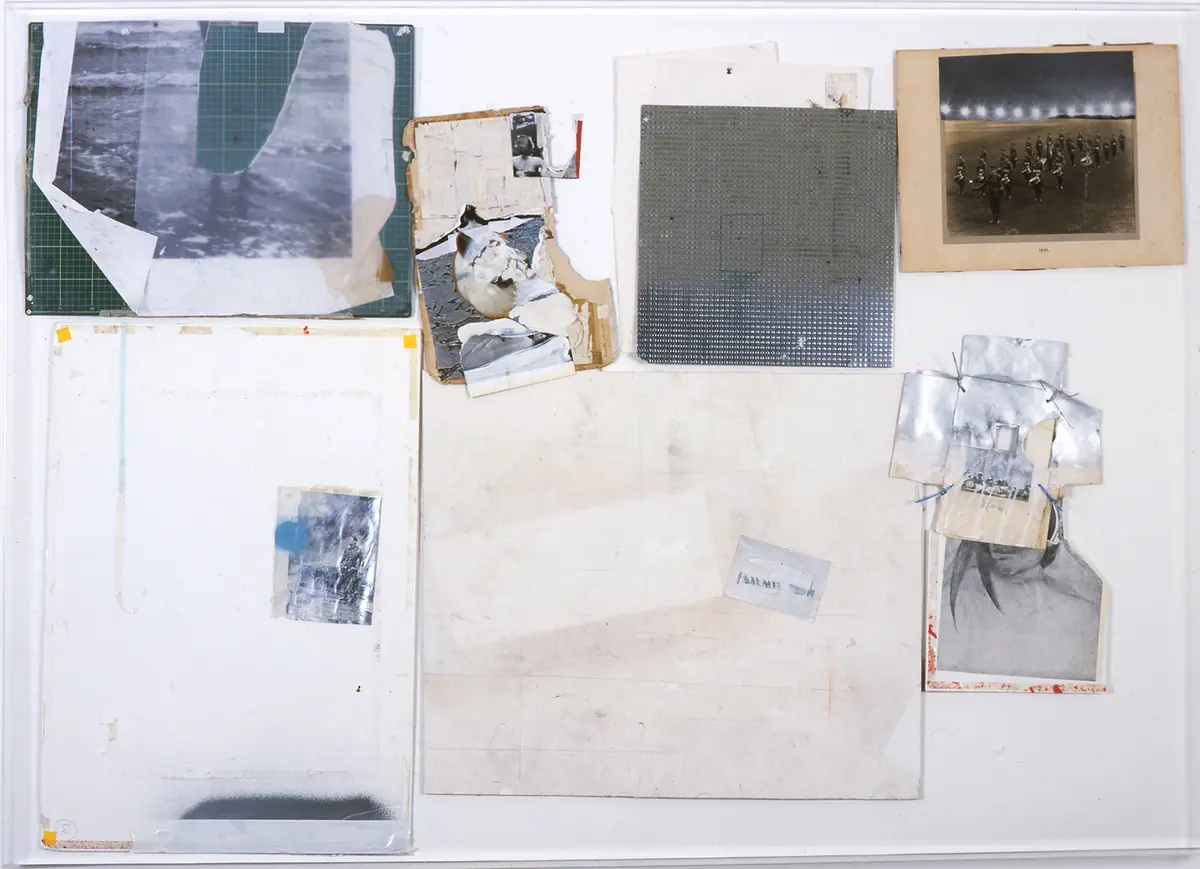We use cookies and other technologies to personalize your experience and collect analytics.
Ross Tibbles
Ross Tibbles
12 January – 11 February 2007
Press release

Stuart Shave Modern Art is pleased to present British artist Ross Tibbles in his first solo show in the UK.
Tibbles adopts an archaeological approach to the mapping of the mundane, repositioning the focus of found imagery to plot the psychogeography of our collective visual associations and histories.
Amongst the papery fragments that make up each of Tibbles’ assemblages might sit a familiar image, inverted or skewed – perhaps a crowd scene, a face or a painting by de Kooning or Titian – now partially obscured, painted over or obliterated. Reworked and made new, each piece becomes a retelling of a shared memory, given new life and removed from the weight of literal or historical readings. Tibbles’ process is a ‘debunking’, a making sense of the vast glut of imagery that seeps into our minds, fortifying the tropes that prompt our memories and our sense of common history.
Selecting or tearing sections from the sea of newspapers, magazines, art historical prints, chance-happened upon wooden boards, discarded photos and pieces of paper that flow across the floor of his studio, Tibbles constantly remakes the surface of walls around him. Each work then develops with the artist’s own very personal visual sensibilities. As in his collection of images, Tibbles accumulates sentences, lyrics, song titles and sayings, which in turn become the titles for the works. Tibbles’ deliberate ambiguity and calculated absence of defining comment or intention makes room for the viewer’s personal interpretation of each work. Signifiers to precise dates or eras are scratched away, painted over in metallic coloured paints and glitter or layered with conflicting imagery to nullify its potency in our visual summing up. This sense of cognitive recycling and the remaking and realigning of our visual associations lies at the centre of Tibbles’ work.
Continually pinning, moving and exchanging images over several months, Tibbles moves gradually towards the work’s natural resolution. At the end of this cumulative process the ensuing personal distance felt by the artist is deliberately amplified by the heavy Perspex boxes chosen to frame the works. The placing of what were originally, seemingly worthless, pieces of detritus behind this protective covering also elevates them with a greater sense of value, purposefully imitating archival and museological presentation styles.
The hang of the works in the gallery space reflects their placement in Tibbles’ studio. Fragmented and dislocated from their original context, they begin to reference the laying out of finds on an archaeological site. Similarly the white spaces between the images in each of the works suggest the difficulties in remapping the past and the incomplete nature of memory and our fundamental inability to accurately recall precise experiences or facts.